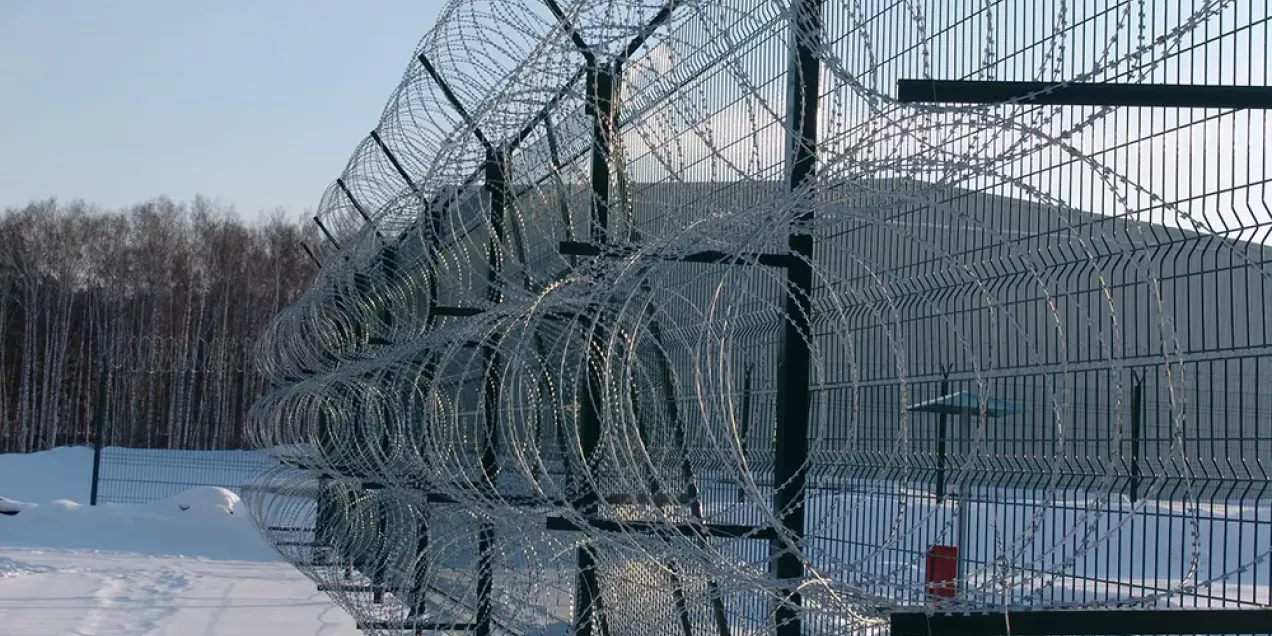
Combined installation of Egoza is a method of deployment that utilizes multiple structural solutions at once: concertina wire on the ground, flat or mesh barriers on fences, pyramid-shaped obstacles between posts, and more. This approach provides maximum flexibility and allows the system to adapt to any site conditions. Combined installation of Egoza is used at facilities that require perimeter protection with varying terrain, differing fence density, or partially missing support structures. It allows for optimal material use, reduced installation costs, and ensures high barrier efficiency.
Why a Combined Approach Is Needed
Uniform perimeters are rare. Typically, one part of the perimeter is already fenced, another is open, and a third lies on a slope. In such conditions, a single type of barrier is not always feasible. Combined installation allows for different types of Egoza to be used in different segments, while keeping the entire system cohesive and functional.
For example, a flat Egoza barrier can be installed along a concrete fence, a pyramid barrier on an open section, and a mobile frame barrier at an entry point, which can be quickly deployed or removed. This ensures both permanent protection and rapid response capabilities.
Examples of Combined Barrier Configurations
- Concertina wire on top of the fence + a ground-level spiral;
- Egoza razor mesh along the fence height + a pyramid barrier at the base;
- Flat barrier between posts + concertina wire above and below;
- Fixed perimeter barrier + mobile reinforcement in high-threat situations.
This method is widely used for securing high-value assets, strategic perimeters, port zones, border areas, storage sites, and other facilities with complex terrain and multi-layered security requirements.
Design and Installation Considerations
Combined installation requires more thorough planning: height differences, angles, structural load capacity, and soil type must be assessed in advance. It is important to ensure smooth transitions between different barrier types to eliminate weak points. All system components must be compatible in terms of material, coating, and geometry, or the system will not function effectively.
Maintenance also needs to be considered. Joints, crossings, and transitions must remain accessible for inspection, replacement, or reinforcement. Visually, the barrier should appear as a unified system, even if composed of different components.
Fastening and Anchoring Combined Elements
Standard fittings are used during installation: brackets, anchors, rebar, cables, clips, and clamps. However, transitions between different constructions often require additional reinforcements: strengthening frames, welded joints, adapters for switching from horizontal to angled mounting. In open areas, anchoring to the ground is crucial and is done with screw piles or driven rods.
All types of razor tape may be used – galvanized, stainless steel, with reinforced cores, or various blade profiles – depending on the specific section and threat level.
Operational Recommendations
For complex configurations, it is advisable to develop an installation plan and technical passport for each segment of the barrier. This simplifies maintenance, replacement, and inspection. When using non-standard solutions – for example, integration with electric systems – additional insulation and compliance with electrical safety standards are required.
It is also recommended to include warning signs, lighting, and video surveillance systems, especially when using mobile vehicle-deployed barriers or temporary perimeter reinforcements.